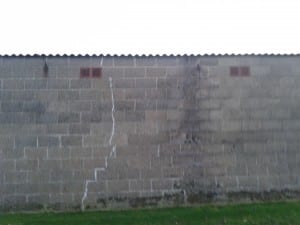It is performance day but before we perform Safe Bet at 1:00 pm a preview of the performance will be held , we were told to treat this with as much professionalism and concentration as the 3:00pm performance. There would also be an audience.
Before beginning I had an issue to solve when the audience are constructing the paper aeroplanes. Instead of me demonstrating how to make them , each audience member is given a paper aeroplane template which they should follow. Between each of the three groups there will also be a laminated copy of the instructions. I also learnt that Jordan and I, before the introduction would welcome the audience, inviting them to sit on the Grandstand steps and wait for the performance to begin. I was also informed that, as I have already took up a lead role in the introduction , that I should act as a tour guide, taking the audience from the ‘women at war’, to ‘Jordan’s memorial’ and then outside to the ‘Penny For Your Thoughts’ display. These activities are all connected with the theme of war so it seems logical that I can lead the audience through .
Paper Aeroplane Template

On reflection, the preview performance went quite well. There were several strengths to this run-through. Firstly, my concentration at the start of the piece was excellent . I didn’t break character or give any information away about the piece , just remained ambiguous. My accompanying posture worked well and so did my expression. Furthermore, I projected my voice well during both the introduction and as the spectators were flying their planes. I spoke with clarity and diction , didn’t rush my speech and brought meaning into all actions. My instructions to make the paper aeroplanes were furthermore clear , and my eye contact surveyed the whole group throughout, improving my circle of attention Finally, my attention to detail on my uniform was outstanding. It represented the period and the level of authority for my character extremely well.
Area Outside Of The Grandstand Where My Airmen/ Audience Members Will Stand Against When Flying Thier Aircraft 
There were however quite a few weaknesses to my preview performance Firstly, the rotations of the 3 groups around each of the war activities were messy. Once I brought my first group back to the weighing room in The Grandstand, I forgot to reseat them at the back of the room, so that the representative of the ”Tank group’ would know to collect them. Therefore not all the audience were able to participate in all the war exercises In addition, before the introduction I occasionally made conversation to Jordan which wasn’t focused or relevant . In my performance I must instead stay on task throughout. Moreover, I stood too far forward when my aircrew were throwing their planes.. Thus, this didn’t give a poignant impression, instead sometimes seemed slapstick messy and inappropriate Instead, I should ensure that “traces of those who have lived and died here before, along with their ghostly handiwork” remain ((Pearson, 2010, p169)). Finally, I feel that I should have been more prepared when giving each audience member a betting slip. Some looked confused as to where to sit. In future I should gesture to what I want them to do throughout.
Overall, I know what needs to be developed for the final performance . Likewise, following the performance a slight change has been made to the format. At the end of the piece, once the audience have offered their own suggestions for the Grandstand’s future possible uses, I will lead them back to the ‘Penny For Your Thought’s group, so that they can announce the last few numbers, stopping at 9,000. Of course this highlights the fact that 9,000 Lincolnshire Men died at war. Also, when taking the audience , for the first time, to the pennies I have been asked to find the sunlight, and position the audience in this area. They are able to see all the pennies clearly and so will have more of an understanding of the process and message of the group.
Works Cited
Pearson, Mike (2010) Site Specific Performance, London: Palgrave Macmillan





